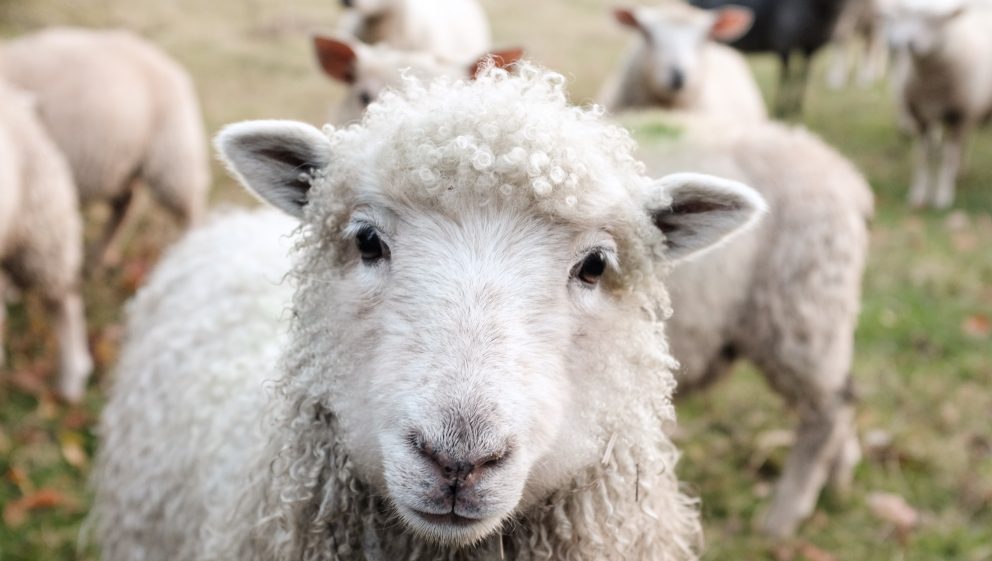Ban on the use of lead shot – finally!
Posted 10 Jul 2025

Posted on the 21st January 2021
The UK and Welsh Governments have announced a consultation and we need as many people as possible to respond. Animal Aid would like to see a complete ban on the needless live export of animals.
We are however, a step closer to banning some live farmed animal exports and improving conditions for those that will sadly continue to be unecessarily exported. Animal Aid has put together some supporter guidance notes below to help simplify the process.
The deadline for submitting responses is now 25th February, as confirmed on the DEFRA consultation site.

The Scottish government is running a separate consultation on live exports – find out more information here.
The reference document for England and Wales is available here to download
We have provided a full list of the consultation questions from the reference document and have included key points to incorporate into your responses at the bottom of this page. Please note that the question numbers vary slightly between the consultation document linked above and the online survey form (which starts the main consultation questions from number five) so be careful to ensure you are responding to the correct question if you use the online form.
There are three ways that you can respond – via email, via the online survey or by printing your response to complete and submitting it by post.
A response can be sent by email to AnimalWelfare.Consultations@defra.gov.uk with the subject line ‘Consultation on improvements to animal welfare in transport December 2020’. Your response must include your name, email address and organisation (for organisation, you may put ‘Supporter of Animal Aid’ or another protection group if you are not a group representative)
Responses can be sent via the online survey on the Government website:
Responses can be printed and sent to:
Consultation Coordinator,
Defra
2nd Floor,
Foss House,
Kings Pool,
1-2 Peasholme Green,
York,
YO1 7PX
Q1: Do you agree that livestock and horse export journeys for slaughter and fattening are unnecessary? Please explain your views.
Welcome the following improvements, should any live exports be allowed to continue:
Q2: Do you agree that in order to prohibit livestock and horse export journeys for fattening where the animal will be slaughtered soon after arrival, these export journeys where animals are slaughtered within 6 months of arrival should be prohibited? Please explain your views.
Q3: Do you agree that the only exceptions to prohibiting live export journeys should be for poultry live exports, and animals going for breeding or production that will not be slaughtered within 6 months of arrival? Please explain your views.
Q3a. Exemption for poultry.
Q3b. Exemption for breeding
Q3c. Exemption for production/fattening
Q3d. Concerns about registered horse exemptions, especially retired registered horses
Q4: What would be the financial impact to your business or organisation of no longer being able to export livestock or horses for slaughter or fattening? Please explain any impacts provided.
n/a
Q5: What alternatives would your business or organisation explore if it was not able to export livestock or horses for slaughter or fattening?
n/a
Q6: Do you agree with the proposed maximum journey times as outlined in Table 1? Please explain your views and highlight any potential regional impacts that your business or organisation might experience.
Q7: Do you see a need for any exceptions to the maximum journey times and, if so, why? Please provide evidence.
Q8: In the case of such exceptions, what requirements should be put in place to ensure animal welfare is protected?
Q9: What would be the financial impact to your business or organisation due to new maximum journey times being implemented? Please explain any impacts provided.
n/a
Q10: Including loading, unloading and stops, how long is your average journey for the livestock, poultry or horses that your business or organisation manage?
n/a
Q11: Do you agree that a new journey should not start until a minimum of 48 hours have elapsed after the previous journey? Please explain your views.
Q12: Do you agree that there should be a minimum 7-day rest period for cattle? Please explain your views.
Q13: Do you agree that we should prohibit both short and long poultry journeys when the external temperature is outside of a temperature range of 5-25oC, unless the vehicle is able to regulate the internal temperature within this range for the duration of the journey by means of a thermo-regulation system, and that this temperature range should be 5-25oC? Please explain your views.
Q14: What would be the financial impact to your business or organisation of prohibiting both short and long poultry journeys when the external temperature range is outside of 5-25oC? Please explain any impacts provided.
n/a
Q15: Do you agree that we should prohibit both short and long livestock and horse journeys when the external temperature is outside of a temperature range of 5-30ºC, unless the vehicle is able to regulate the internal temperature within this range for the duration of the journey by means of a thermo-regulation system, and that this temperature range should be 5-30oC? Please explain your views.
Q16: What would be the financial impact to your business or organisation of prohibiting both short and long livestock and horse journeys when the external temperature range is outside of 5-30oC? Please explain any impacts provided.
n/a
Q17: Do you think that there are other species that should be considered as vulnerable and have a smaller external temperature range applied, outside of which journeys cannot take place? Please provide evidence.
Q18: What proportion of your current transportation vehicles have the facility to regulate temperature and provide ventilation?
n/a
Q19: For your vehicles which do not have the facility to regulate temperature and provide ventilation, what would be the cost of retrofitting to enable them to regulate temperature and provide ventilation?
n/a
Q20: Are there any other steps that can be taken to ensure animal welfare can be maintained in extreme weather? Please provide evidence.
Q21: Do you agree that we should use allometric principles as a basis for future space allowance calculations? Please explain your views.
Q22: Do you think that reforms to space allowances based on allometric principles should apply to both short and long journeys? Please explain your views.
Q23: Do you agree with the proposed species-specific headroom requirements? Please explain your views.
Q24: Do you think that the proposed species-specific headroom requirements should apply to both short and long journeys? Please explain your views.
Q25: What would be the financial impact to your business or organisation of the proposed headroom requirements for both short and long journeys? Please explain any impacts provided.
n/a
Q26: Do you agree that we should prevent animals from being transported in rough weather at sea and that animals should not be transported during Beaufort Wind Force 6 or above? Please explain your views.
Q27: What would be the financial impact to your business or organisation of prohibiting transport during Beaufort Wind Force of 6 or above? Please explain any impacts provided.
n/a
Q28: Do you think that there should be any exceptions to the previously mentioned proposals alongside the specific exceptions already outlined, excluding the proposal to prohibit live exports for slaughter and fattening? Please provide evidence.
Q29: What conditions should be met in order to ensure animal welfare is protected in the case of other exceptions?
Q30: Do you think that it should be possible to obtain permission to use an exception on an ongoing basis to avoid the need for transporters to apply before every applicable journey? Please explain your views.
Posted 10 Jul 2025

Temperatures are rising and it’s time to get outdoors, enjoy the weather and tuck into some delicious vegan food! Thanks to an abundance of plant-based options now available, there’s an alfresco option for every tastebud...
Posted 09 Jul 2025
